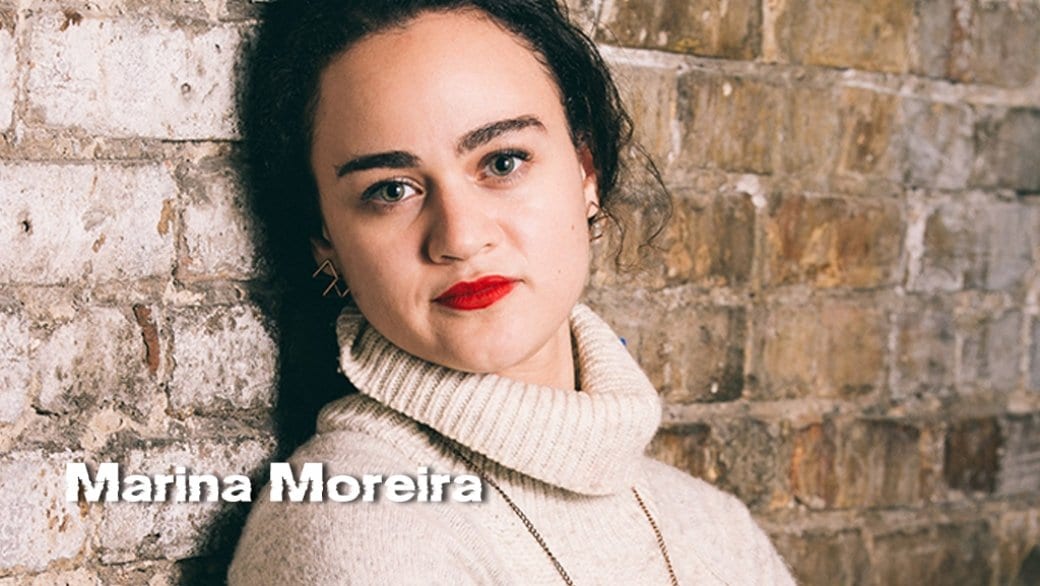Most millennials can’t remember a world without the internet. But their identities are intensely entwined in the technology they’ve grown up with, and it can make defining themselves a challenge. Marina Moreira’s piece for Buddies in Bad Times’ Emerging Creators Unit, Frida Khalo Googles Herself, examines this set of issues facing her generation, and her own questions on identity as a child of Brazilian immigrants.
Daily Xtra caught up with Moreira to discuss her love of Frida Kahlo, the importance of creating in queer space and why she can’t live without Wikipedia.
Daily Xtra: Besides the fact that the internet is a big part of your life, why did you want to explore this subject matter in a piece?
Marina Moreira: The idea has been churning around in my head for a long time. I think it started out as a joke actually? I’ve always admired Frida Kahlo’s paintings and I was joking once about how if she’d had an Instagram account, her paintings would be totally different. I saw this exhibit at the MOMA of Eastern European and South American artists from the ’60s and ’70s. There were a few Brazilian artists and I thought about why I chose Frida rather than one of them since I’m a first-generation Canadian, but my entire extended family is still in Brazil. It seemed funny, how I know so much about this Mexican artist and yet before that exhibit I wouldn’t have been able to name Lygia Clark or Mira Schendel, nor had I seen any of their art, but they are supposed to be “my” artists.
Why was it important for you to develop this work in a queer space?
I feel like this is a lame answer to your question but it’s because this space is safe. It’s a very personal work, dealing with a lot of the unsureness of what I feel right now, about my right to call myself queer, about how queer I am, about whether or not that word is the right word for how I feel about my work and myself. And this is the space where it’s fine to bring that in to the development of my piece, where I’m encouraged to explore every aspect of my art, identity, and sexuality and how they relates to the development of this work. I could develop the piece somewhere else and it would still be about identity and art and all that confused stuff. But I think developing it in a queer space allows the piece to breathe freely and explore everything that could come up. It’s safe for me to be confused and it lets my piece be confused first.
On the subject of piecing your identity together through the internet, what specifically were you looking to explore?
The piece is still developing and growing and changing a lot right now. But I think it’s more about the feeling of being stuck between two places and not knowing which one is right. Or being stuck in many different places and not knowing if any of them is right. So it’s more along the lines of picking each part of yourself apart and learning as much as you can about each of those pieces to understand how and if they fit together. We all carry around so many identifiers, [it] can get to be confusing and limiting. With this piece I wanted to ask about all these identifiers that have been attached to me or that I have adopted to see what they might mean.
The online part just seemed like a given. I mean how else to people explore and express themselves these days? Not only that, but how do people learn or research these labels or concepts they hear about? I don’t know what I would do without Google or Wikipedia. Maybe it’s just my millennial-ness but I honestly don’t know what I would do without the internet to teach me or just provide some feedback about what I am doing, even if it’s in the form of “likes.”
<Find out more about Buddies’ Emerging Creators Unit
Frida Kahlo Googles Herself
Friday, Feb 19–Saturday, Feb 20, 2016
Buddies in Bad Times Theatre, 12 Alexander St, Toronto
buddiesinbadtimes.com


 Why you can trust Xtra
Why you can trust Xtra


